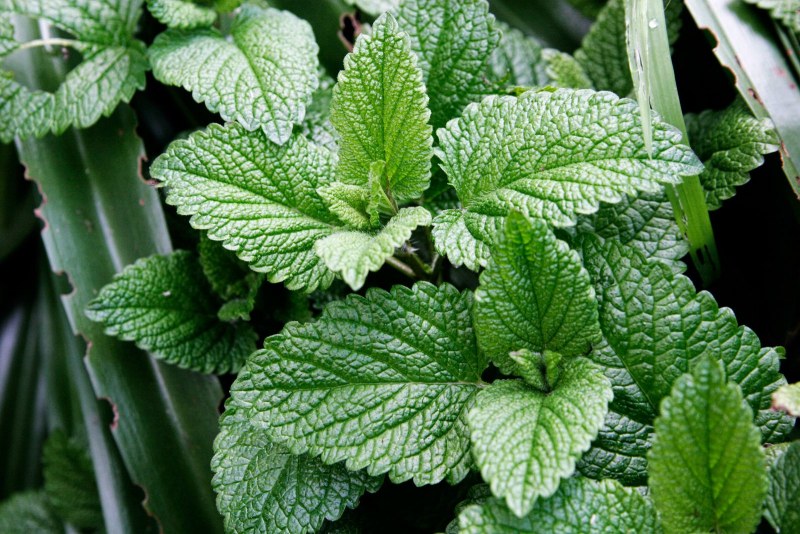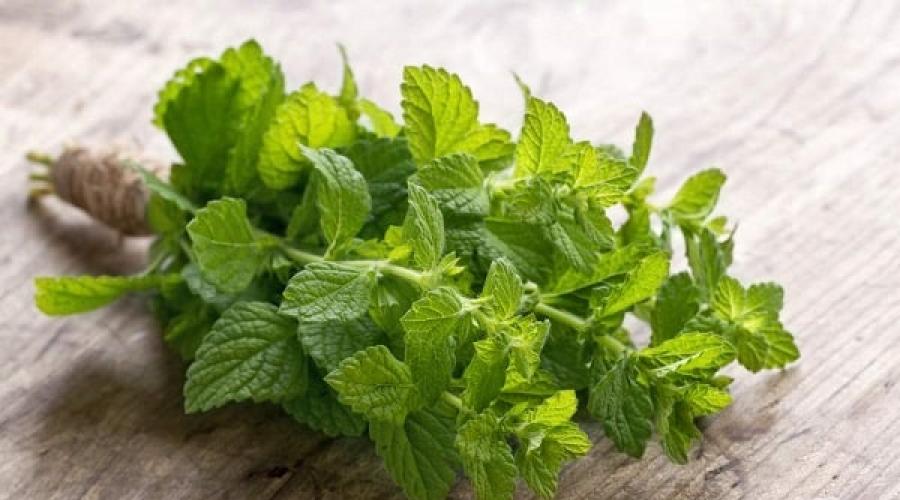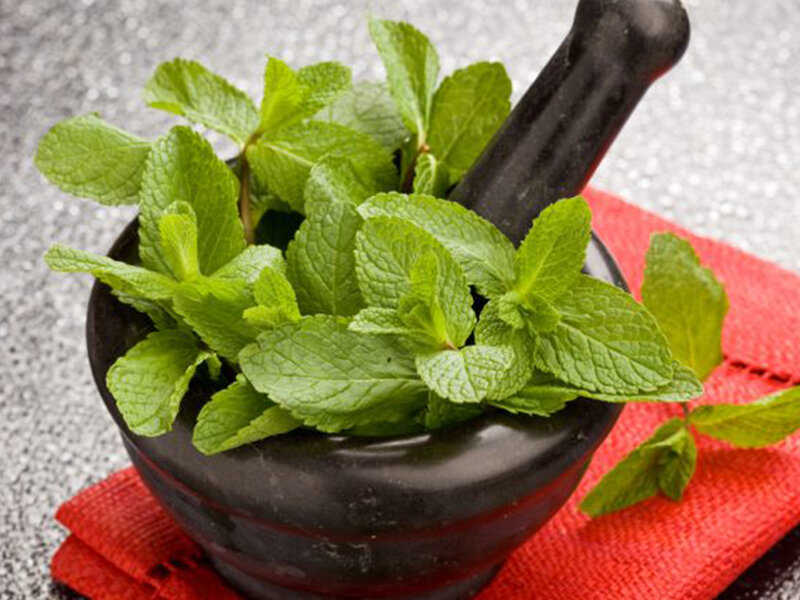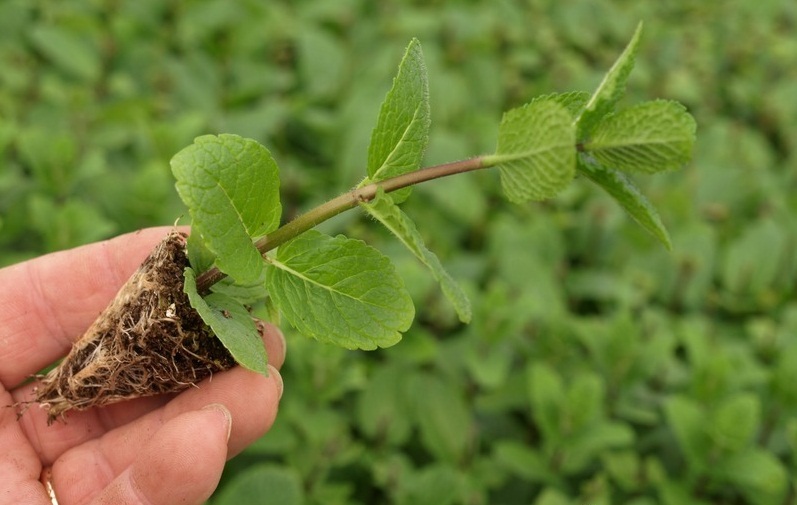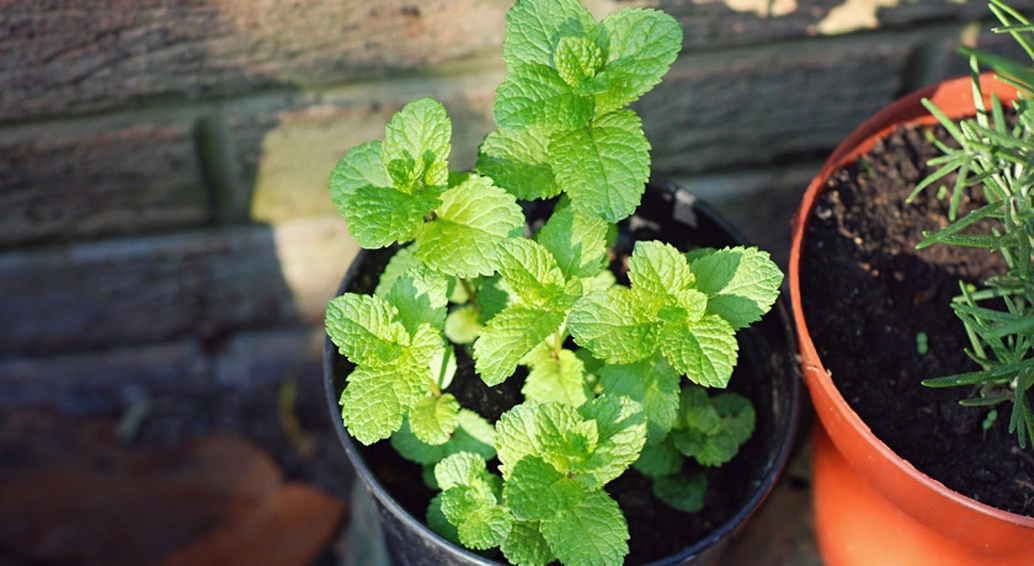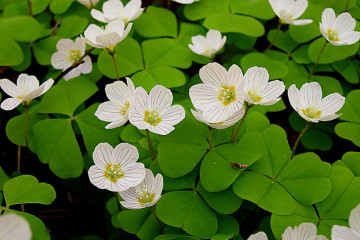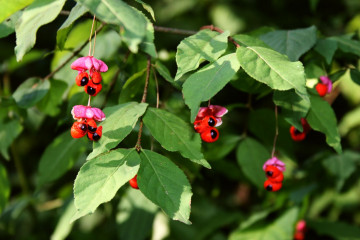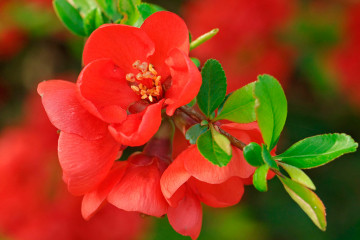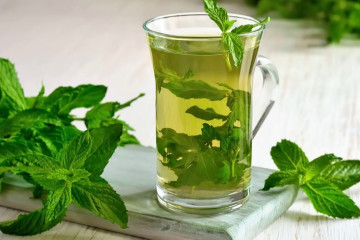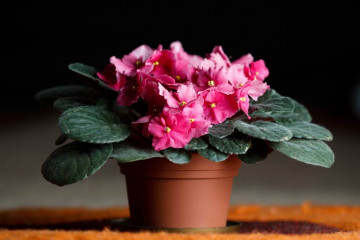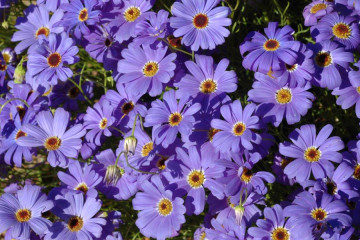Peppermint (Mentha Piperita) - plant description
Content:
Mint (family Lamb, or Lipocytes) is a hybrid formed from aquatic and garden species. Popularly known as cold mint, peppermint, English mint, chill. The first mentions of what mint is, date back to the times of Ancient Rome. An infusion of peppermint leaves has been used as a refreshing agent. The culture is grown in garden plots and on an industrial scale.
Peppermint: features of cultivation and care
Peppermint is a herbaceous perennial plant. According to the description from the botanical reference book, it has a branched fibrous root system and an erect tetrahedral stem. The height, depending on the type, varies from 0.5 meters to 1.5 meters.
The stem is covered with fine fluffy hairs. The leaf plates are ovoid. The edges are slightly serrated. Pale to dark green color. During the flowering period, it releases spike-shaped inflorescences. Small purple flowers.
Mentha piperita is a valuable honey plant. The culture has found application in medicine, cooking, perfumery. Plants are distinguished by a rich composition of macro- and microelements.
Mint contains:
- essential oils;
- vitamins of groups A, C, PP, B;
- calcium;
- potassium;
- magnesium;
- sodium;
- phosphorus;
- iron;
- manganese;
- flavonoids;
- tannins;
- hesperidin;
- beain;
- polyphenols;
- ursolic and oleanolic acids;
- menthol.
Healing properties
The beneficial properties of mint are numerous and varied. It is used to treat and prevent a wide range of diseases.
Peppermint has a sedative, analgesic, anti-inflammatory and antiseptic effect. Helps to reduce temperature, increase immunity. It has a tonic and refreshing effect. In case of disruption of the gastrointestinal tract, it is used to normalize digestion and increase appetite. Used as a choleretic agent.
Peppermint has been shown to be highly effective in treating:
- diseases of the nervous system;
- insomnia;
- respiratory infection;
- sore throats, bronchitis, pharyngitis;
- diseases of the oral cavity;
- diseases of the female reproductive system.
Contraindications for use
Despite the undeniable benefits, mint has a number of contraindications. The high content of essential oils in the composition can provoke an allergic reaction, cause drowsiness, and a decrease in the reaction.
It is not recommended to use mint:
- during pregnancy;
- during lactation;
- children under the age of 6;
- with individual intolerance;
- in case of low blood pressure;
- with varicose veins;
- with weakness, loss of strength, drowsiness.
Usage Methods
Mint and preparations based on it have a wide range of applications. Its use is best known in medicine.
Due to its medicinal properties, the plant is used for the treatment and prevention of:
- respiratory viral and bacterial diseases;
- diseases of the digestive system;
- diseases of the cardiovascular system;
- nervous disorders;
- skin diseases.
As a medicine used:
- water infusion;
- alcohol infusion;
- mint broth;
- butter;
- tea with mint.
In addition to traditional medicine, mint is used in cooking and cosmetology.
Species diversity
To date, more than 25 species and 10 subspecies of peppermint are known (translated into Latin as Méntha piperíta). Many of them are actively grown in garden plots.
- Curly. Smaller view. The height of the bushes does not exceed 80 centimeters. The difference is curly foliage and high frost resistance. Possesses medicinal properties.
- Apple. Low grade and velvety dark green foliage. Has an unexpressed aroma.
- Long-leaved. The variety is characterized by powerful tall bushes. The height reaches 1-1.5 meters. The main difference with peppermint is the elongated toothed leaf shape.
- Lemon. Known as lemon melissa. Has a pleasant lemon scent. Differs in medicinal properties.
- Fragrant. Low perennial plant. Has a pleasant smell. It is actively used in cooking and folk medicine.
- Wild. The difference with peppery is the mild aroma and slight cooling effect.
Among gardeners, mustard, garden, orange, dog, steppe, water, Korean, chocolate, ginger mint are known. Of the hybrids grown on an industrial scale, the following became widespread: Prilukskaya 6, Medicinal 4, Riddle, Ocharovanie, Udaychanka.
Growing features
Mint is a vegetatively grown plant. Common methods include:
- division of roots;
- germination of cuttings;
- sowing seeds.
Spring time is chosen for planting. The second half of April - the first half of May is best suited. At this time, the plants take root well in a new place and begin to grow actively.
When growing, a number of rules are observed:
- The plot for seedlings is prepared in advance. It is dug up and cleared of weeds. When preparing, it is recommended to lay fertilizers in the soil in advance.
- When planting plants grown from seeds, they are covered with a film or non-woven material. This will allow young seedlings to quickly adapt to new conditions. Landings are opened when the threat of night and day frosts has completely passed.
- Peppermint reacts negatively to the high nitrogen content in the soil. When feeding, preference is given to potash and phosphorus compositions.
- The culture belongs to the creeping category. Constant monitoring is required to limit overgrowth. Slate sheets or metal hoops embedded in the ground act as a natural limiter.
- Planting plants by dividing the roots is allowed until mid-August.
Features of outdoor care
According to the description, mint is an unpretentious plant. Growing and caring for it in the open field does not require serious labor. The main requirement is compliance with simple rules of agricultural technology. They consist in timely watering, loosening the soil and feeding:
- Mint grows well in lighted, not dry areas. Plants are often grown in partial shade.
- Fertile, well-drained soil is best.
- Under normal conditions, it is enough to water 2 times a month. At elevated air temperatures and drought, the frequency is increased to 1 time per week.
- Plants are fed in the spring.A mixture of superphosphate, ammonium nitrate and potassium salt is added to the soil. Ingredients are taken at the rate of 250 for every 10 square meters.
- Loosening is carried out several times per season, combined with weeding of weeds.
Features of growing at home
For reproduction at home, seed, plots from adult plants, cuttings are used. Seed breeding is one of the most labor-intensive methods. To do this, you must strictly follow the instructions for sowing seeds. The most common is the sprouting of cuttings or the division of bushes.
Choose healthy processes up to 20 centimeters long. The cuttings are placed in water with the addition of a growth activator. After the appearance of a branched root system, the seedling is placed in a previously prepared pot.
The sprout is buried and sprinkled with soil. After planting, the plant is watered abundantly with water. To successfully grow mint, it is recommended to follow a number of care rules:
- The temperature in the room is maintained from +20 to +25 ℃.
- The seedlings are regularly ventilated and irrigated as the soil dries up.
- After each watering, the soil is loosened to improve soil aeration.
- When growing mint from seeds, thinning is carried out in order to remove weak and yellowed sprouts.
- Seedlings are provided with good lighting. Additional lighting is provided in winter.
Adult sprouts are looked after like other indoor plants - they follow the scheme of watering, feeding and loosening the soil.
Flowering period
The flowering period of peppermint depends on the growing region. It is earlier in the southern regions. Flowers appear in mid-June. In the central regions and in the north, this period is shifted to a later time. The first flower stalks appear in late June or mid-July. In the North, mint can bloom only in early August.
The culture is distinguished by long flowering, which lasts until September. In some species, peduncles are preserved until frost.
Peppermint is a cross-pollinated plant. Insects are the main pollinators. After flowering, the seeds ripen in plants - small brown nuts. The seeds retain their properties for two years.
Collecting and storing peppermint
Plants of the second year of life are suitable for collection. Work is carried out in mid-June or July, when the plants enter the flowering phase. It is believed that at this time it has the most healing properties.
It is better to collect the medicinal plant in the morning on a dry day. Before picking, it is recommended to rinse the mint with water and let it dry. Knowing everything about mint, its medicinal properties and method of application, they choose the method of harvesting.
Mint harvesting is carried out in several ways:
- Freezing. Fresh plants are washed, dried and put into containers or bags in small portions. The containers are placed in the freezer for storage.
- Mint syrup. 800 g of water requires 500 g of sugar. The syrup is brought to a boil. Mint is added to it and boiled again. Filter the hot mixture through a fine sieve and add the juice of half a lemon. The composition is thoroughly mixed and brought to a boil for the last time.
- Mint tincture. For preparation, 70 percent alcohol is used. Mint is poured into a sterilized container with alcohol in a ratio of 1:10. The container is placed in a dark, cool place for 10 days. The container is shaken every 1-2 days. After 10 days, the container is moved to the refrigerator for another 3 days.After that, the tincture is filtered and poured into a clean container for storage.
- Liquor. To prepare a drink, you need 400 milliliters of alcohol, 200 milliliters of water, 1 g of lemon zest and 6 g of dry mint. All ingredients are mixed in one container and infused for 2 days in a cool dark place. After 2 days, a syrup made from 1 kg of granulated sugar and 150 milliliters of water is added to the tincture. The mixture is stirred and bottled.
- Drying. Long stems of deliberately washed mint are cut and collected in bunches up to 3 cm in diameter. The bunches are hung in a well-ventilated dark place.
Disease and pest control
Mint has a weak immune system. It is often susceptible to disease and pest infestation.
Experts identify a number of diseases that cause the greatest harm to plants:
- Rust. It occurs at high humidity, low temperatures or with an excess of nitrogen in the soil. It is characterized by the formation of an auburn pigmentation on the leaf plates.
- Powdery mildew. The main sign of damage is the appearance of a plaque on the leaves of a white tint. For the prevention of the disease, spraying with colloidal sulfur is carried out.
- Verticillary wilting. It manifests itself in a change in the color of the upper pairs of leaf plates to black. As the disease spreads, the plant dies.
- Anthracnose. The disease manifests itself in the formation of brown spots on the leaf plates. To combat the disease, spraying with Bordeaux liquid is used.
- Septoria or spotting. It manifests itself in the form of brown or black spots of an angular shape with a black edging. To combat the spread of the disease, spraying with Bordeaux mixture is used.
- Overgrowth. The disease is caused by mycoplasmas. In affected plants, growth cessation, a change in foliage color is noted. Affected plants are recommended to be dug up and burned. Healthy bushes are transplanted to a new site.
Of the pests, mint is most susceptible to damage:
- mint flea;
- shchitonoskoy;
- aphids;
- cicadas;
- beetles weevils;
- meadow bloodworm;
- slobbering penny.
From pests, a bear, caterpillars of a cabbage scoop, a meadow moth, and a burdock are isolated. To combat pests, crop rotation is observed, the planting scheme is followed, and preventive spraying is carried out.
